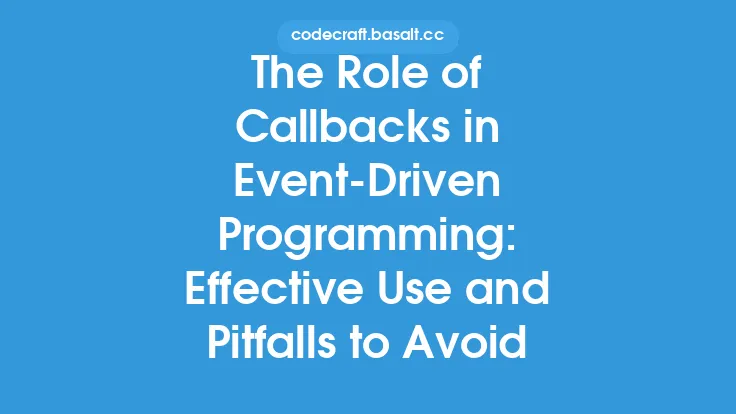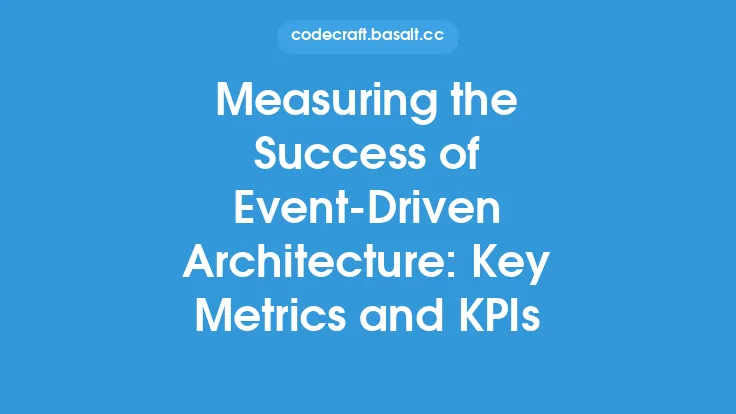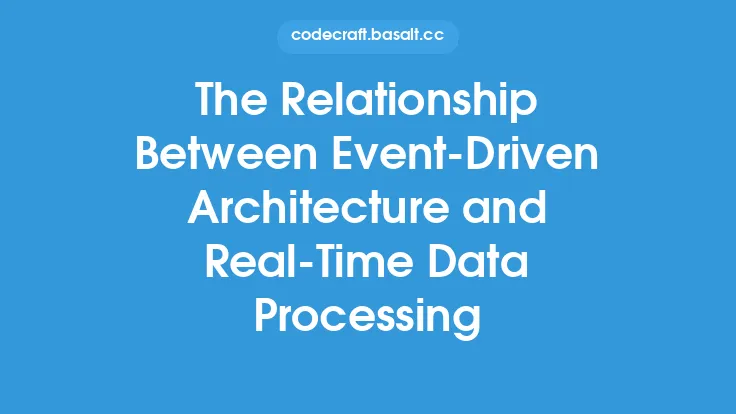Event loops are a fundamental component of event-driven architecture, playing a crucial role in the design and implementation of responsive, scalable, and maintainable systems. At its core, an event loop is a mechanism that allows a program to wait for and respond to events, such as user input, network requests, or timer expirations, in a non-blocking and efficient manner. In this article, we will delve into the world of event loops, exploring their inner workings, benefits, and applications in event-driven programming.
Introduction to Event Loops
An event loop is essentially a loop that runs continuously, listening for incoming events and dispatching them to the appropriate handlers. This loop is typically implemented using a queue data structure, where events are added and removed as they are processed. The event loop is responsible for managing the queue, ensuring that events are handled in the correct order and that the system remains responsive to new events. In a single-threaded environment, the event loop is usually the main thread of the program, while in a multi-threaded environment, it may be a separate thread or a pool of threads dedicated to event processing.
How Event Loops Work
The event loop operates in a continuous cycle, consisting of three primary stages: event collection, event dispatching, and event handling. During the event collection stage, the event loop gathers incoming events from various sources, such as user input, network sockets, or timers. These events are then added to the event queue, where they are stored until they can be processed. In the event dispatching stage, the event loop removes events from the queue and dispatches them to the corresponding event handlers. Finally, during the event handling stage, the event handlers process the events, performing any necessary actions or computations.
Benefits of Event Loops
Event loops offer several benefits that make them an attractive choice for building event-driven systems. One of the primary advantages is that they allow for non-blocking I/O operations, enabling the system to handle multiple events concurrently without blocking or waiting for individual events to complete. This leads to improved responsiveness, scalability, and throughput, as the system can handle a large number of events without becoming overwhelmed. Additionally, event loops provide a simple and efficient way to manage events, reducing the complexity and overhead associated with traditional threading or polling approaches.
Types of Event Loops
There are several types of event loops, each with its own strengths and weaknesses. The most common types include:
- Single-threaded event loops: These event loops run in a single thread, processing events one at a time. They are simple to implement and suitable for small-scale applications or systems with low event rates.
- Multi-threaded event loops: These event loops use multiple threads to process events concurrently, improving responsiveness and throughput. They are more complex to implement and require careful synchronization to avoid thread safety issues.
- Asynchronous event loops: These event loops use asynchronous I/O operations to process events, allowing the system to handle multiple events concurrently without blocking. They are well-suited for systems with high event rates or those that require low-latency responses.
Implementing Event Loops
Implementing an event loop requires careful consideration of several factors, including the choice of programming language, the type of event loop, and the underlying system architecture. In general, event loops can be implemented using a variety of programming languages, including C, C++, Java, Python, and JavaScript. The choice of language often depends on the specific requirements of the system, such as performance, scalability, and ease of development.
Best Practices for Event Loop Implementation
When implementing an event loop, there are several best practices to keep in mind. These include:
- Keep the event loop simple and efficient: Avoid complex event loop implementations, as they can lead to performance issues and make the system harder to maintain.
- Use a suitable data structure for the event queue: Choose a data structure that provides efficient insertion, removal, and traversal operations, such as a queue or a stack.
- Implement event handlers carefully: Ensure that event handlers are designed to handle events efficiently and correctly, avoiding blocking or long-running operations.
- Test the event loop thoroughly: Verify that the event loop works correctly under various scenarios, including high event rates, concurrent events, and error conditions.
Common Challenges and Pitfalls
When working with event loops, there are several common challenges and pitfalls to be aware of. These include:
- Event loop starvation: This occurs when the event loop is unable to process events due to a lack of resources, such as CPU or memory.
- Event queue overflow: This happens when the event queue becomes too large, causing the system to run out of memory or become unresponsive.
- Event handler blocking: This occurs when an event handler blocks or waits for a long-running operation to complete, causing the event loop to become unresponsive.
- Thread safety issues: These arise when multiple threads access shared resources without proper synchronization, leading to data corruption or other concurrency-related problems.
Conclusion
In conclusion, event loops are a fundamental component of event-driven architecture, providing a simple and efficient way to manage events in responsive, scalable, and maintainable systems. By understanding how event loops work, their benefits, and their applications, developers can design and implement effective event-driven systems that meet the needs of modern applications. Whether you are building a small-scale application or a large-scale enterprise system, event loops are an essential tool to have in your programming toolkit.





